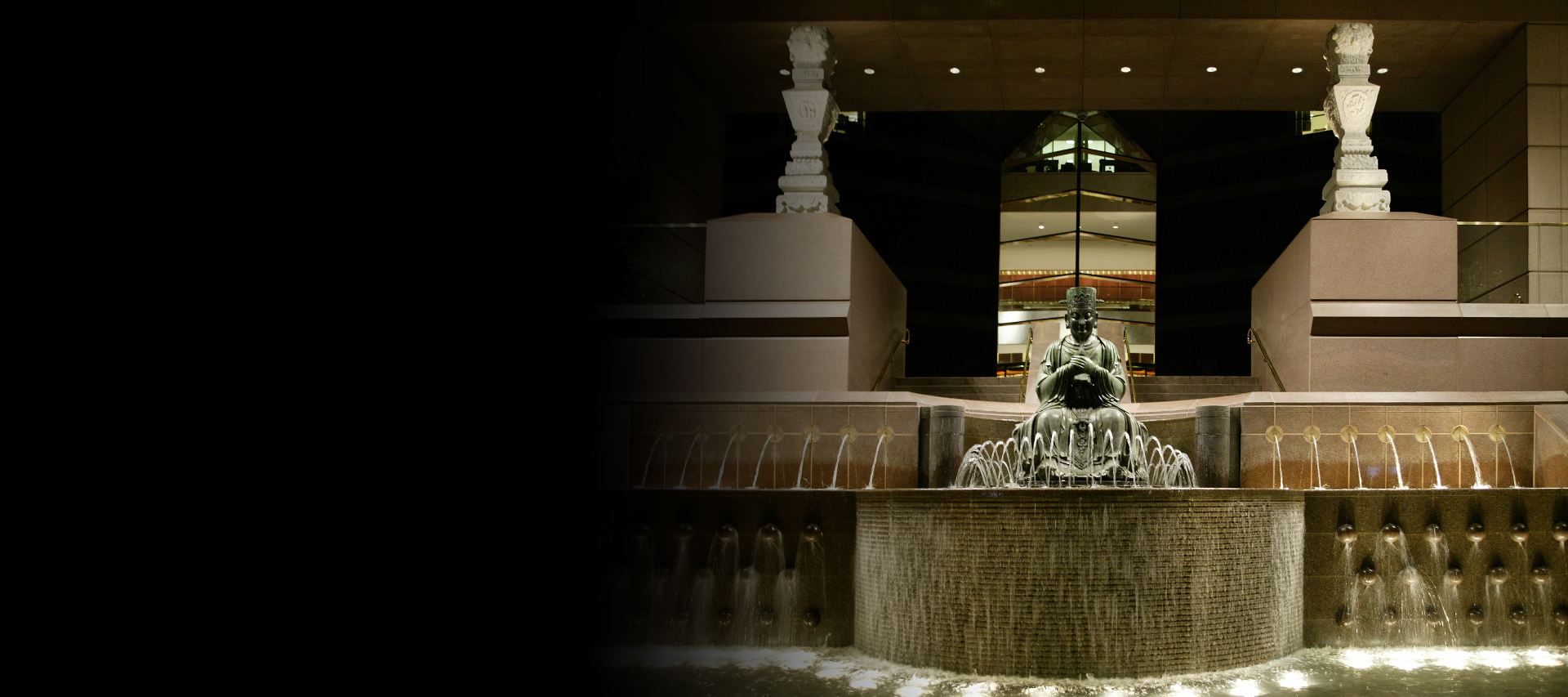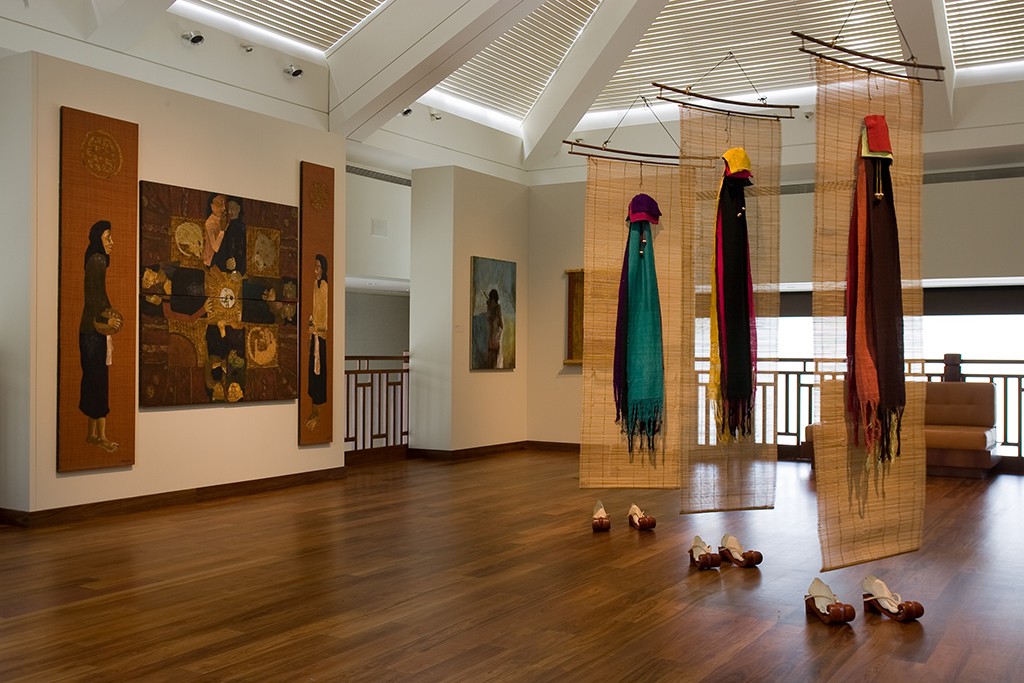
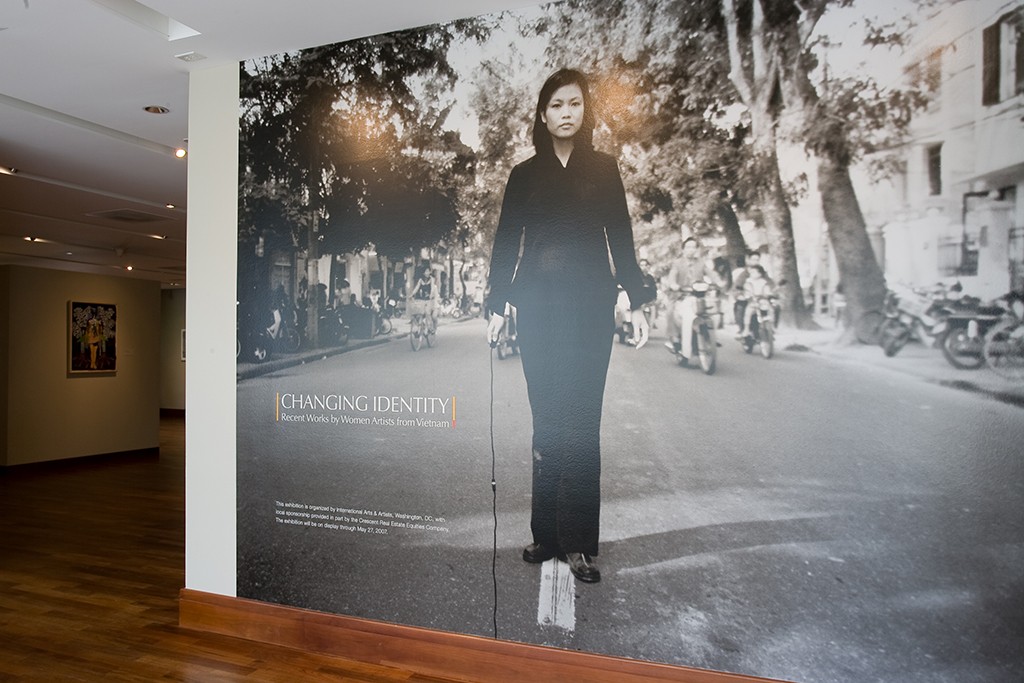
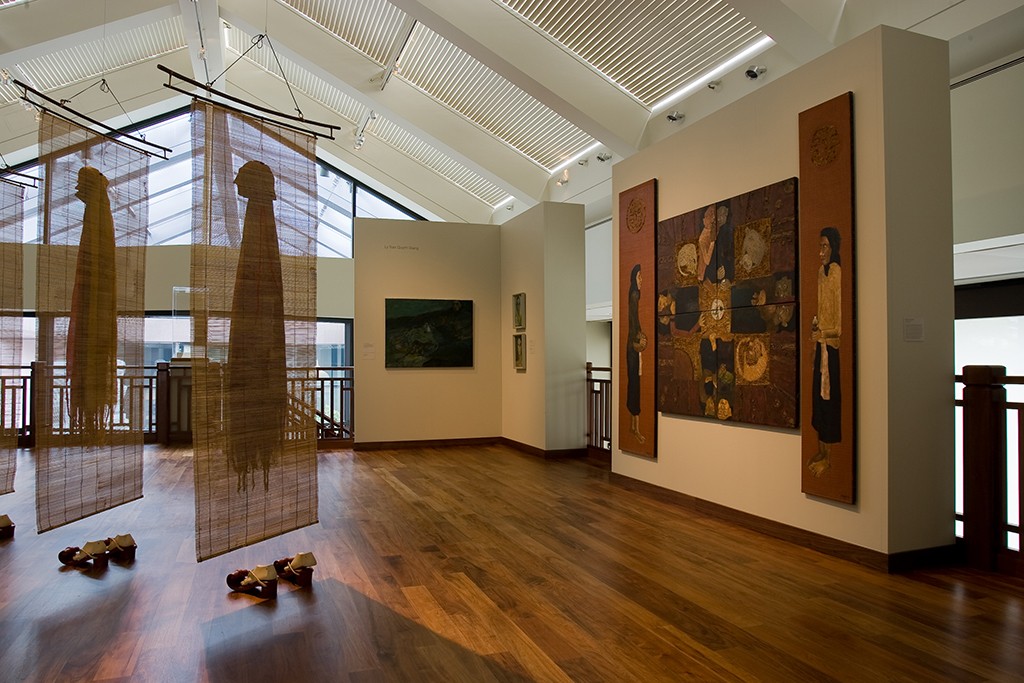

Changing Identity introduces the work of ten contemporary Vietnamese women artists who challenge the stereotypes and traditional roles of women in Vietnamese society. This exhibition is the first survey of women artists from Vietnam to tour the United States. Through the use of various media, subject matters, and aesthetic sensibilities, two generations of artists share views of their country and the changing status of women. Together their work provides a diverse view of Vietnam itself, reflecting a range of opinions and experiences.
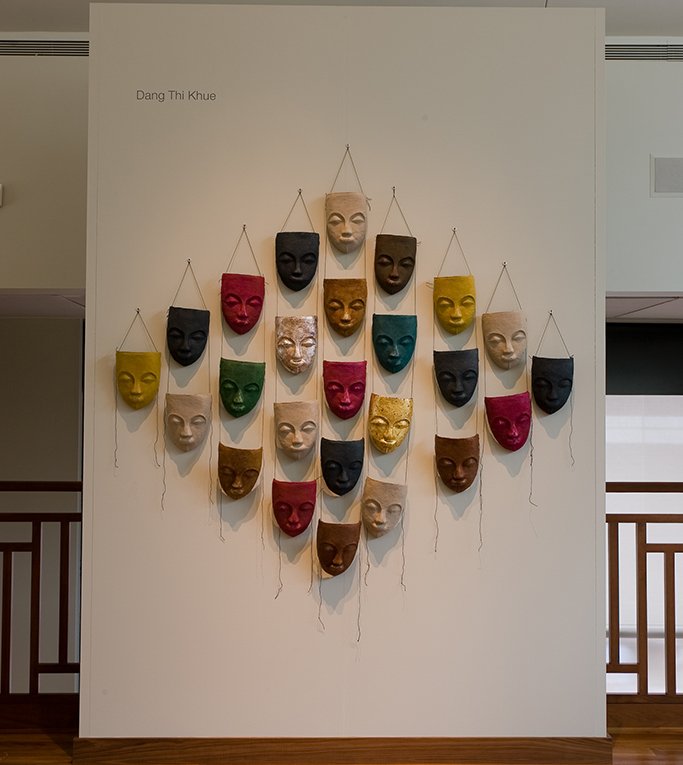
Vietnamese history and folklore is laden with tales of heroic women. In 43 AD, two sisters, Trung Trac and Trung Nhi, riding on elephants, successfully drove away the invading Chinese army. Later, in 248 AD, Trieu Au, also fought off enemy forces in a cunning display of feminine power. The Vietnamese nation itself has an origin myth involving the union of a dragon and a fairy who parented 100 children. These exploits and a strong matriarchal tradition notwithstanding, women in Vietnam have not always been recognized for their contributions toward the national culture.
Vietnamese art has a long history, but the colonial period of French occupation from the late 19th century until 1945 shaped much of what is known today as Vietnamese national art. It was in 1925 that an art school was established in Hanoi and the first generation of academic painters and sculptors were educated. Emancipated in other ways due to their exposure to Western culture, only three women graduated from the colonial art school. After independence, that number multiplied considerably with nearly 50 percent of subsequent graduating classes consisting of women.
It was in 1925 that an art school was established in Hanoi and the first generation of academic painters and sculptors were educated.
Still, today, living in a developing economy after decades of poverty and war, facing pressures of work, family life and male domination, women are often ignored in art exhibitions. Changing Identity is not trying to single out women as a unique category of artists in Vietnam, but rather celebrate the diverse expressions of female identity in a changing society. Each artist in this exhibition shares a unique perspective on her own culture. Rather than creating a generic stereotype of women in Vietnam, this exhibition aims to emphasize Vietnamese women’s individual experiences and personalities in order to challenge both the notion of “woman” as a single category and the “Vietnamese artist” as a single genre of art. These women illustrate not just the multiple faces of Vietnamese society but also the diversity of artistic expressions. Vietnamese art today is emerging as a creative force in large part because of the contributions made by women who, more than their male counterparts, dare to rebel against conformity.
Changing Identity is organized by International Arts & Artists, Washington, DC, and supported in part by the E. Rhodes and Leona B. Carpenter Foundation and the Henry Luce Foundation. Educational activities made possible by a grant from the Ford Foundation, Hanoi office, and fiscally administered by the Institute of International Education.
